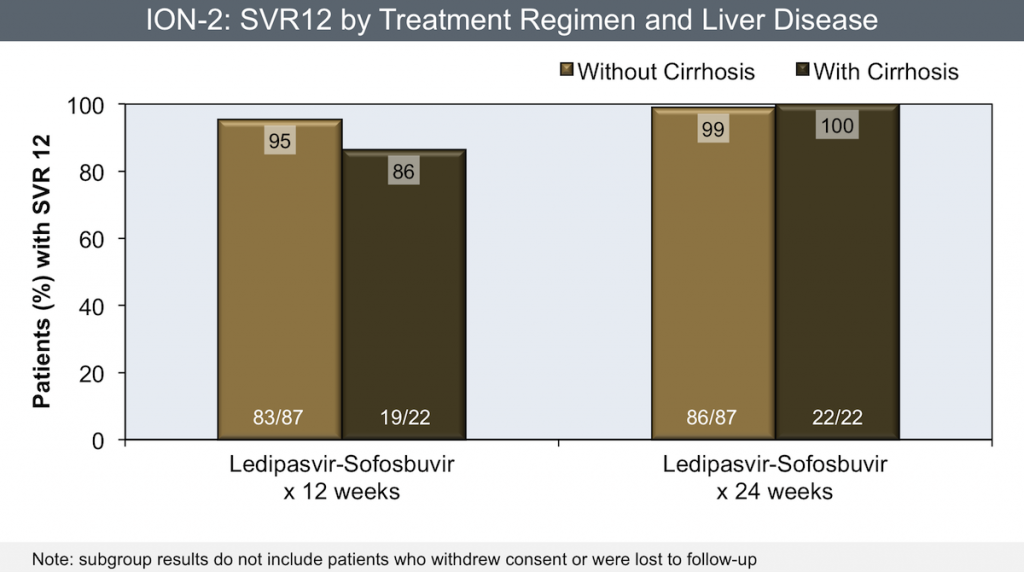Hepatitis C Treatment Time
This page explains how the length of treatment time for Hepatitis C effects Hep C treatment outcomes and cure rates

What is the best option for you when considering the length of time for Hepatitis C treatment? In a nutshell the truth is simple: “The longer the treatment time the higher the cure rate.”
Hepatitis C Treatment Time Periods: How long should you treat your Hep C?
The question of Hepatitis C treatment duration is a very important one as it may make the difference between a successful treatment or not.
This post explains why many health insurance companies and national health services are going for the treatment time of 8 weeks rather than the more successful treatment time of 12 weeks. It’s not because a shorter Hep C treatment time is the best treatment option for the patient with hepatitis C…. it is because it is the best financial option for the Hep C treatment provider.
If your health insurance or health care provider offers you 8 weeks treatment of course you should take it, but seriously consider backing the 8 weeks treatment up with at least an extra 4 weeks treatment using affordable equivalent. Look at it this way. If my maths is correct 8 weeks treatment means about 1 in about 25 people will relapse. 12 weeks treatment means about one in about 40 will relapse. In other words by treating your Hepatitis C for the extra 4 weeks you almost double your chance of not relapsing.
Sixteen weeks treatment is better than 12 weeks treatment but not by a huge amount. However it still improves your chance of a 100% cure.
Put simply the evidence suggests that: The longer the treatment time the higher the cure rate.
We do know, from various studies across all genotypes that rates of cure look something like this:
4 Weeks <50%
8 Weeks 90%>
12 Weeks 95%> (+5%)
16 Weeks 97%> (+2%)
20 Weeks 98%> (+1%)
24 Weeks 98.5% > (+0.5%)
So, as you can see, each extra 4 weeks (1 bottle of tablets) adds a little more to the cure rate, but not as much as the bottle before. Mathematically we are looking at approach to a model like this (where the limit value is 100%)
The shorter Hep C treatment duration of 8 weeks is picked by health insurance companies and public health services as being a balance between cost and cure rate. For a national health service or a health insurance company 90%+ cure rate for Hepatitis C at a cost of (let’s say) $25,000 makes more sense than a 95% cure rate for $40,000. In other words curing only 5% more people will almost double the overall cost to the insurance company or health service.
That logic is fine unless you happen to be one of the 5% that is not cured at the end of the shorter treatment time.
Remember that health insurance companies and most national health services are run by the bean counters. Ultimately they will do what is gives the best result for the budget not necessarily the individual patient.

This graph shows that longer treatment times improved cure rates by 5% for people without cirrhosis and 14% for people with cirrhosis.
Who Needs a longer treatment time?
If you have cirrhosis or a high level of liver fibrosis then you should definitely consider doing the longest treatment time possible to have the highest chance of curing your Hepatitis C. This is something you should discuss with your doctor. The graph above shows that people with genotype 1 treated with Harvoni, with cirrhosis achieved a 14 % higher cure rate from the longer treatment time. The same applies to other genotypes and treatment with other Hep C drugs.
If you have failed a previous Hepatitis C treatment then you should also definitely consider doing the longest treatment time possible. And again it is something that you should discuss with your doctor.
If you have Hepatitis C genotype 3 you should also definitely consider doing the longest treatment time possible. And again it is something that you should discuss with your doctor.
Genotype 3 remains the most difficult to cure in the first instance, and the most difficult to re-treat so while it might not make dollar sense for the health insurance companies to fund 16 weeks, or longer, treatments it is certain that longer treatment times give the highest cure rates.
For more information on preventing Hepatitis C relapse and on how long you should consider treating with DAAs here is a link to HepMag https://www.hepmag.com/blog/reducing-chance-relapse-treatment-time and also a link to a blog post of mine on the subject

